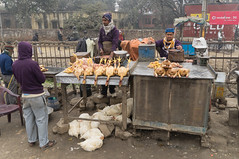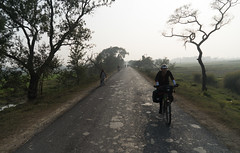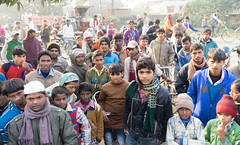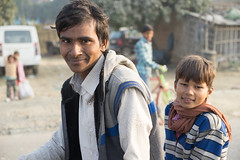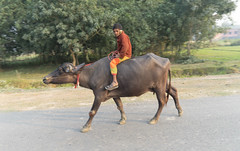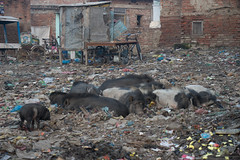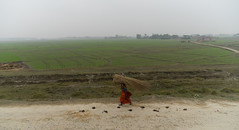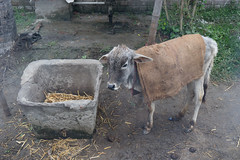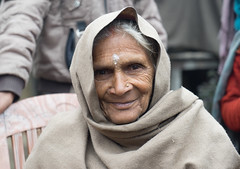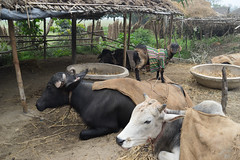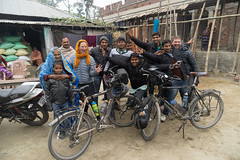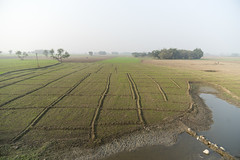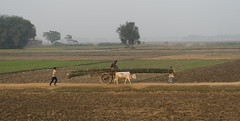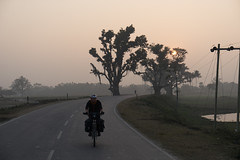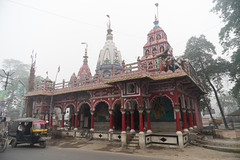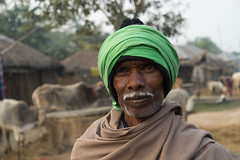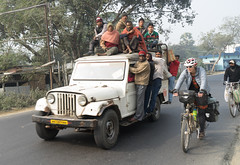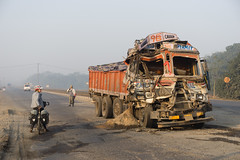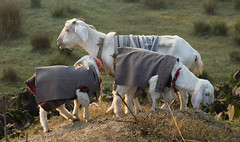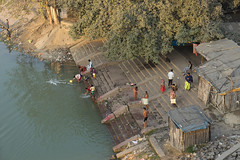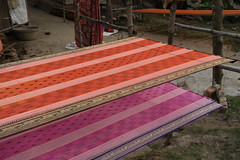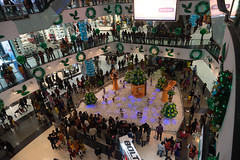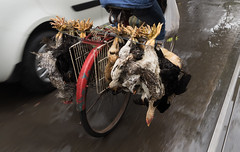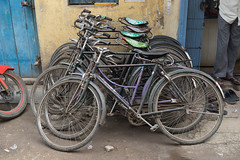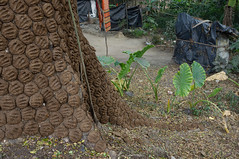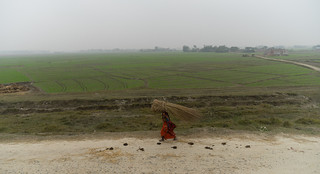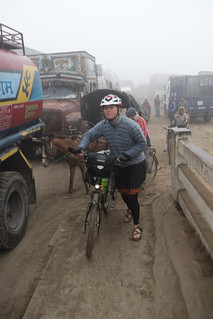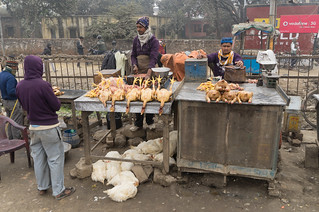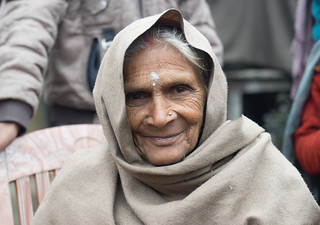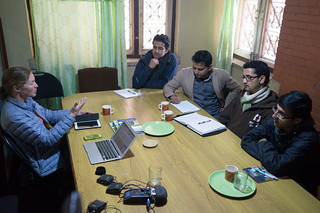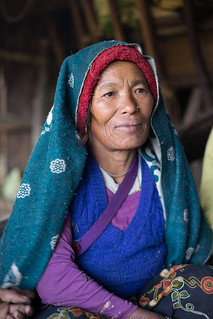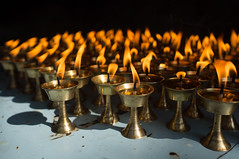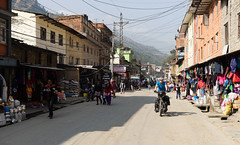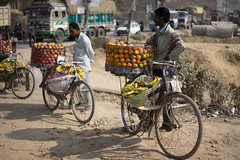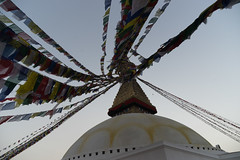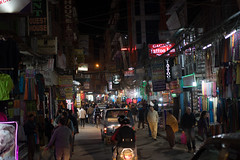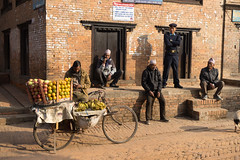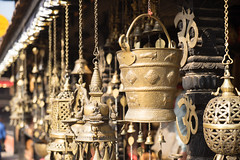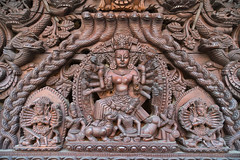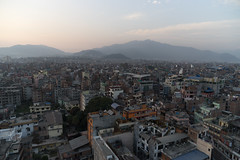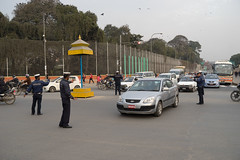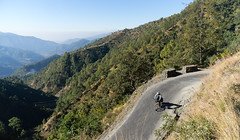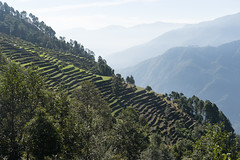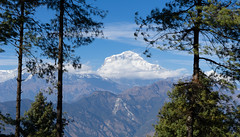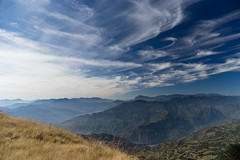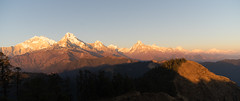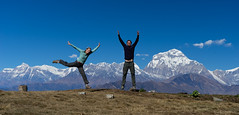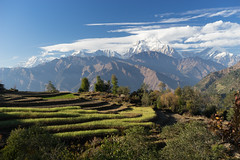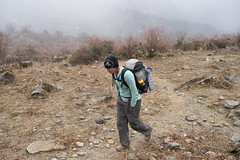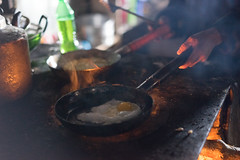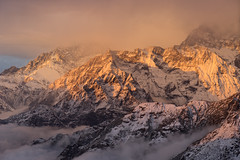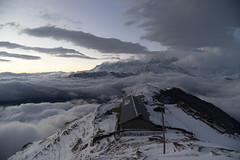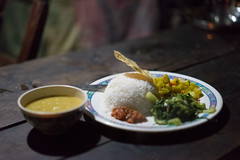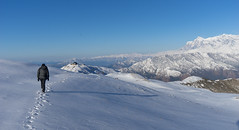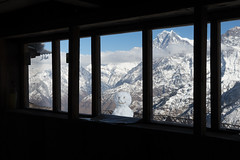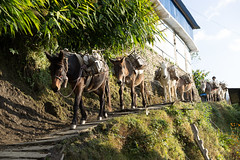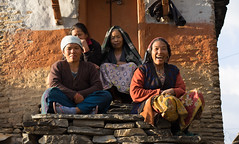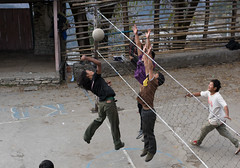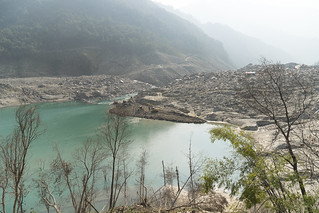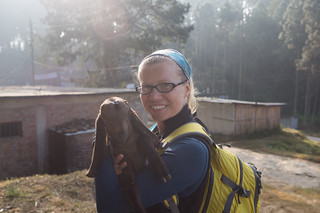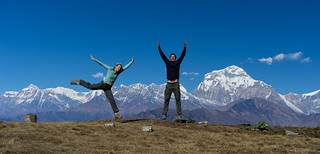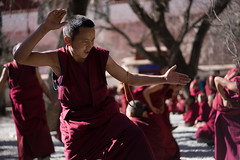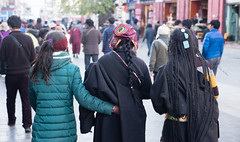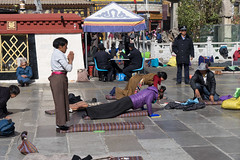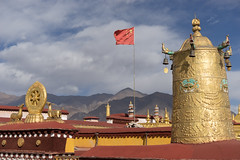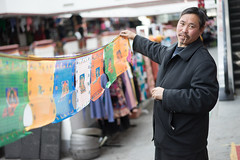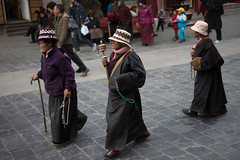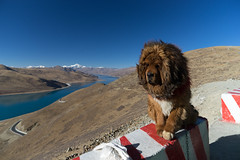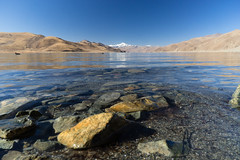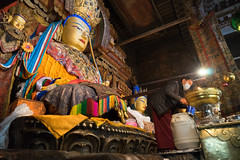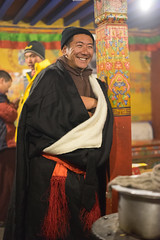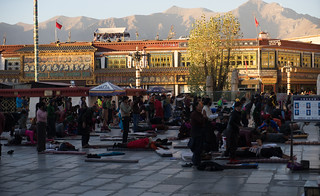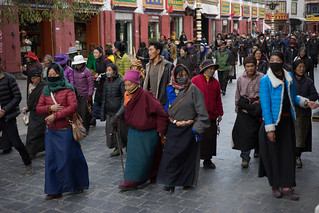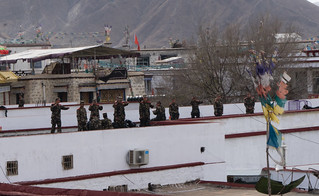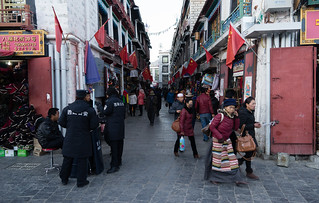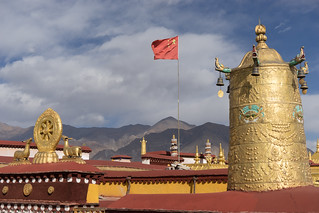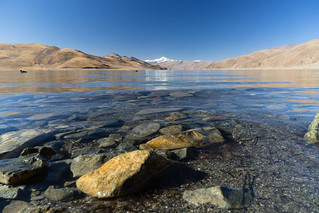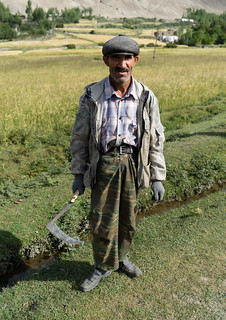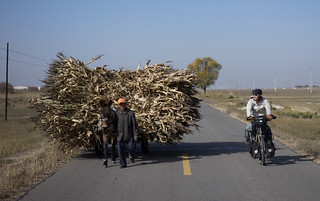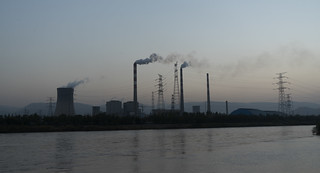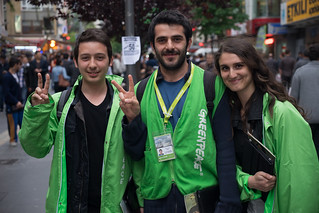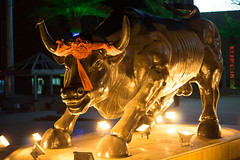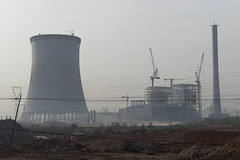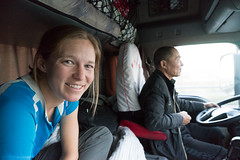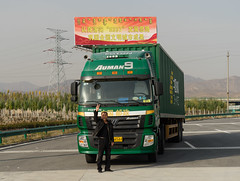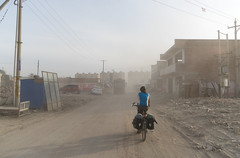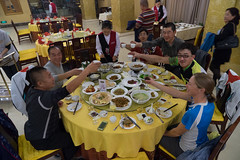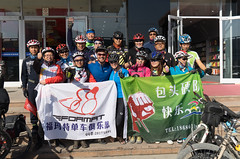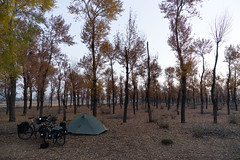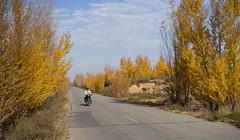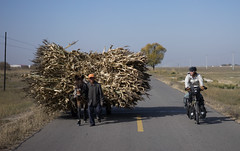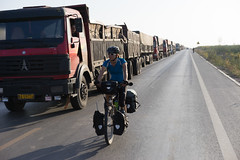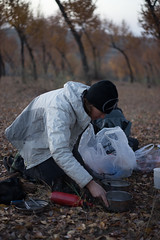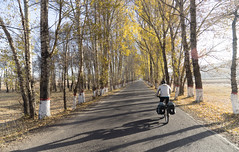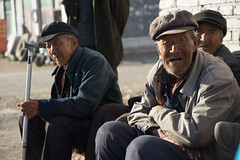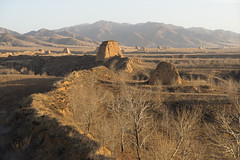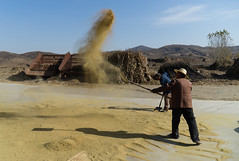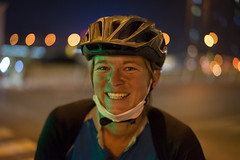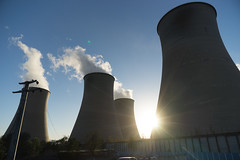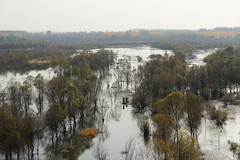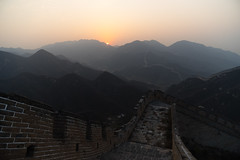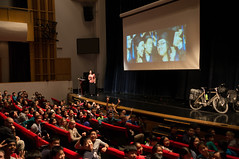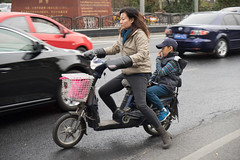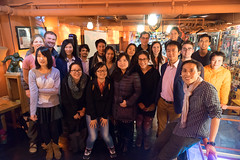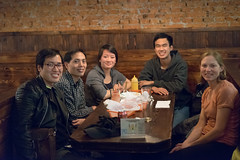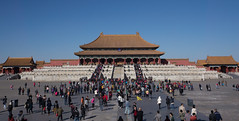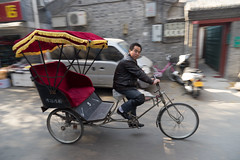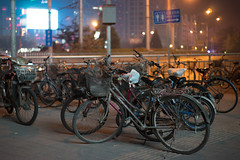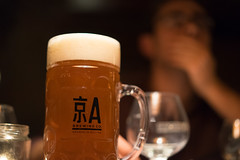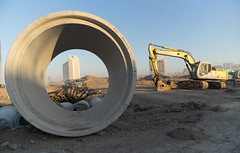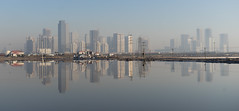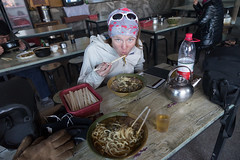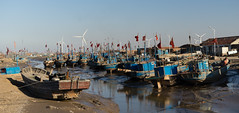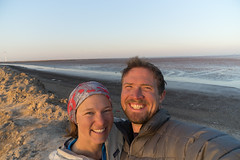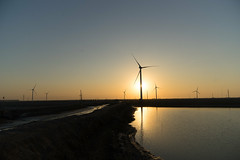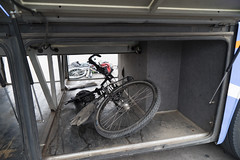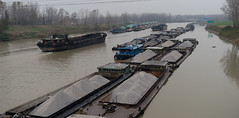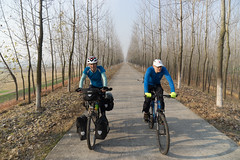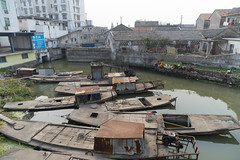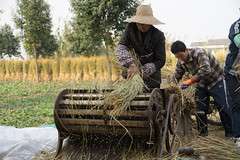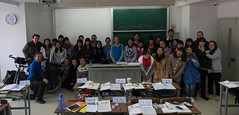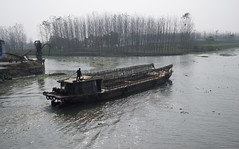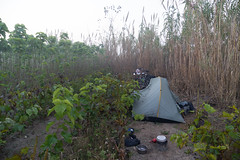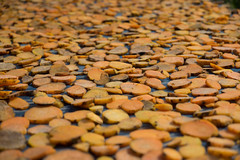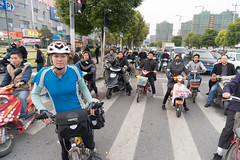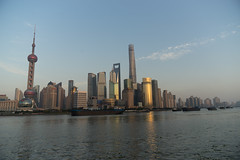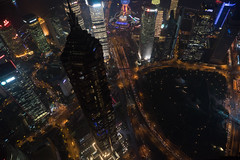Kolkata (Calcutta) was not directly en route from Nepal to Bangladesh, but we went there to get visas for Bangladesh (the embassy in Kathmandu could not provide them) and also so we could visit a large Indian city. Our experience of India was far less comprehensive than our time in China, which we crossed west to east in a serpentine manner, visiting roughly a dozen provinces over two and a half months. From Nepal, we crossed the border into Bihar, biked east across the state until reaching West Bengal, and then rode to Kolkata. While we didn’t get our visas there—we learned at the embassy that Bangladesh now offers visa on arrival (at least at the Benapole border)—we did manage to meet with several people working on climate and energy issues and celebrated the New Year with some lovely new friends.
Adaptation in the Sundarbans
We had the chance to discuss climate change in the Sundarbans with Asish Ghosh of Center for Environment and Development (CENDV) and Anurag Danda of WWF-India. The Sundarbans is a region of about 10,000 square kilometers that straddles the border of India and Bangladesh where the countries meet the Bay of Bengal. Lying in the enormous delta where the Ganges (Padma), Brahmaputra, and Meghna Rivers empty into the Bay after their journey across the subcontinent from the Tibetan Plateau, the Sundarbans is the largest mangrove forest in the world. A large portion of the area is protected as a national park, wildlife reserve, and UNESCO World Heritage Site—the Sundarbans is the largest reserve for the Bengal tiger. The region is a vast network of rivers, creeks, and flat, low-lying islands, and the people living there are often held up as the poster children of vulnerability to climate change, and particularly to sea level rise.
The Indian Sundarbans are experiencing sea level rise and temperature increases at a faster rate than the global average, and farmers are already noticing changes. Data shows that while overall precipitation amounts have not changed, the timing and intensity of rainfall has, with short periods of very heavy rainfall occurring sporadically throughout the rainy season. CENDV is working with other deltaic regions in the world to help develop adaptation strategies. One of the major challenges the region faces is cyclones, which are projected to grow more intense as a result of climate change. In 2009, Cyclone Aila hit the region, destroying over 1000 km of the embankments that normally keep saltwater out of people’s villages and farms. After the cyclone, farmers were unable to grow rice in fields that had been inundated with saltwater, and CENDV helped locate and disseminate salt-tolerant varieties of rice. CENDV also studies migration, which is already occurring as people leave the villages in search of work or because their homes were destroyed, and which is anticipated to increase as climate change and natural disasters make it more and more difficult to sustain livelihoods in the region.
Dr. Danda told us that WWF works with communities near conservation areas that the organization supports. The Sundarbans, as a UNESCO World Heritage Site and reserve for some of the world’s most charismatic megafauna, receive a lot of attention when it comes to wildlife conservation, but the people living nearby are not so lucky. If their villages become uninhabitable, the nearby protected area is off limits for migration, and they can’t count on the government for protection. We learned that while some of India’s islands are likely to be protected for strategic purposes (because their very presence serves to maintain / expand the country’s territory at sea), the four million people in the Sundarbans, and the area itself, are not high on the government’s list of priorities.
Projections indicate that at least a quarter of these people will have to leave their homes in the next 30 years due to sea level rise, erosion, extreme events, and increases to the already large population. To help prepare for this, WWF helps young people—who for the most part only know farming and fishing—develop skills that will serve them if agriculture is no longer viable, or if they migrate to urban areas. These skills include basic education—the organization helps promising students find scholarships to advance their studies and pursue professions such as engineering and medicine—as well as training for work in the hospitality sector, construction, and driving.
These meetings were our introduction to the Sundarbans, which we would later visit on the Bangladeshi side of the border. What we learned is that climate change is already being felt in this area, both in the dramatic way portrayed on the news—with islands disappearing as sea level rises—as well as in more subtle ways. Changing rainfall patterns can destroy crops, tidal surges erode islands, and increased salinity—which has a variety of causes, including sea level rise and flooding during cyclones—can make farming impossible in some areas. It was encouraging, though, to see that organizations such as CENDV and WWF, along with others, are working to soften the blow. Developing or discovering rice varieties that can tolerate salt, submergence, or drought improves food security, while skill development gives people options outside of farming and could make it easier to survive if migration becomes necessary.
Renewable Energy
We had the opportunity to visit the offices of SwitchOn and ONergy, a joint NGO-business organization that helps bring renewable energy to rural people in eastern India, where 50% of households are not connected to the grid. SwitchOn, the NGO, was started in 2008 to do outreach, policy advocacy, and capacity building around climate change and sustainable livelihoods. ONergy, the business side of the organization, was started in 2009 to provide solar energy to underserved communities. ONergy uses innovative approaches such as distribution centers and micro-finance to make solar electricity and technology affordable, while SwitchOn helps build capacity among communities to install, maintain, and maximize the benefits of the technology.
The vision for SwitchOn began after founders Ekta and Vinay Jaju traveled with a friend from Kolkata to New Delhi by bicycle, following India’s coal belt. Along the way, they spoke with experts, activists, and affected communities about the impacts of mining coal. What they learned—about sinking towns, burning ground, and other effects—are detailed in the video, Why New Coal.
Why New Coal from Vinay Jaju on Vimeo.
Upon returning to Kolkata, Ekta and Jaju started SwitchOn and later ONergy, which have so far affected about 200,000 lives, with a goal of affecting one million lives by 2016 and ten million lives by 2022. The major benefits of solar electricity come from simply having convenient access to light. Instead of kerosene, which is smoky and provides poor quality light, SwitchOn/ONergy’s beneficiaries and customers can flip a switch and have high quality light for studying, working, and entertainment. The organization also provides street lighting, water heating systems, and cook stoves, as well as solar-powered technology in the agricultural sector, such as cold storage and irrigation systems.
We also spoke with Subhro Sen at WWF, who works on rural electrification in the Sundarbans. The program he described uses distribution centers and financing models to make the products affordable and to ensure that they are well maintained and provide the intended services to customers. One of our questions for both organizations was whether these sorts of projects could actually result in delaying connection to the grid for the communities they served. We learned that grid power and diesel, which is often used in generators and to pump water, are highly subsidized and therefore very cheap, making it difficult for solar power to be cost-competitive. Ekta told us, though, that over time solar is cheaper than diesel, and the hope is that eventually some of ONergy’s customers can become producers of solar energy. Then, if the government expands the grid to them, they can sell power back to it.
While it’s inspiring to learn about the positive impacts these organizations are having on people’s lives, it frustrates me that the government isn’t able to deliver such services. I am a strong supporter of renewable energy and this type of work, and I can definitely see the case for new electrification to be sustainable and low-fossil fuel. However, I can’t help but note a disconnect—maybe even an irony—in that the people who will be most affected by climate change, and who have contributed basically nothing to causing it, are the ones using renewables while much of the developed world goes on using fossil fuels. If the market is large enough, perhaps it will contribute to bringing down the cost of renewables and mainstreaming them, but this is something that everybody should be contributing to. Nonetheless, these sorts of projects are inspiring in that they are helping to improve people’s standard of living without contributing to climate change, which David writes about extensively in The Bicycle Diaries, and which is such a contentious and important issue in the international climate negotiations.
Sustainable Sourcing
Our final meeting in Kolkata was with ITC, one of India’s largest companies. We met with Dr. Ashesh Ambasta, Vice President and Head of Social Investments; Sanjib Bezbaroa, Vice President and Head of Corporate Environment, Health and Safety; and Nazeeb Arif, Vice President Corporate Communications, who told us about the company’s ‘triple bottom line’ approach to business. ITC’s products range from paper to food to hotels, and what stuck with me is that the company is able to support millions of what they call sustainable livelihoods as part of their business practices. For instance, they are “carbon positive,” “water positive,” and “solid waste recycling positive.” This means that they use a high percentage of renewable energy sources and sequester more CO2 than they produce through afforestation projects; ‘create’ more water than they use through rainwater harvesting and other means to capture runoff for use in irrigation; and recycle more waste than is produced from their operations.
They showed us a video of communities where the raw materials for their products are grown, with testimonials of how people’s lives had improved. For example, the company provided saplings for trees that could grow in degraded farmland that was no longer productive, and the farmers were then able to make a living planting and tending the trees before selling them for paper production. This is done in a seven-year cycle rather than through clear-cutting, and more trees are now grown than the company can use, so farmers sell to other companies as well. ITC began this project at a time when most pulp was imported, and they are proud of creating both demand for and supply of domestically produced pulp, as it provides livelihoods for local people and, when managed correctly, improves the environment where the trees are grown. There were many such examples of triple bottom line practices that the company has implemented, often in partnership with civil society. In communities where they source agricultural products such as wheat, for example, the company has invested in infrastructure to harvest rainwater for irrigation, at the same time training and empowering local people to build and maintain such systems.
Interestingly, the company’s motivation does not come from its customers. While organic and fair trade labels are gaining in popularity in US and European markets, the people we met with at ITC said these issues are not really on the radar of Indian consumers. Instead, the company is motivated by the idea of ‘country before company’ and by profit. ITC is proud to support producers within India and contribute to the country’s economy—as they say, businesses can’t succeed in societies that fail. By creating sustainable livelihoods and supply chains, they are creating a secure base for their own operations. ITC, a $45 billion market cap company, is one of the top three companies on the Indian stock exchange. From what we learned, this success appears to be in part because of—rather than in spite of—their investment in sustainable livelihoods around the country.
After a whirlwind two and a half days in Kolkata, we rode out of the city on a rainy morning, accompanied by a camera crew for eTV and bound for Bangladesh. Stay tuned for updates from the front lines of climate change, the Sundarbans themselves.











